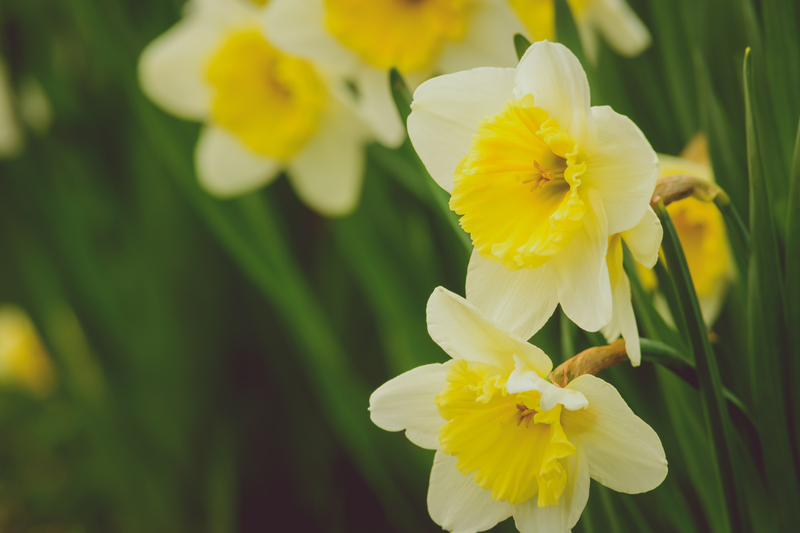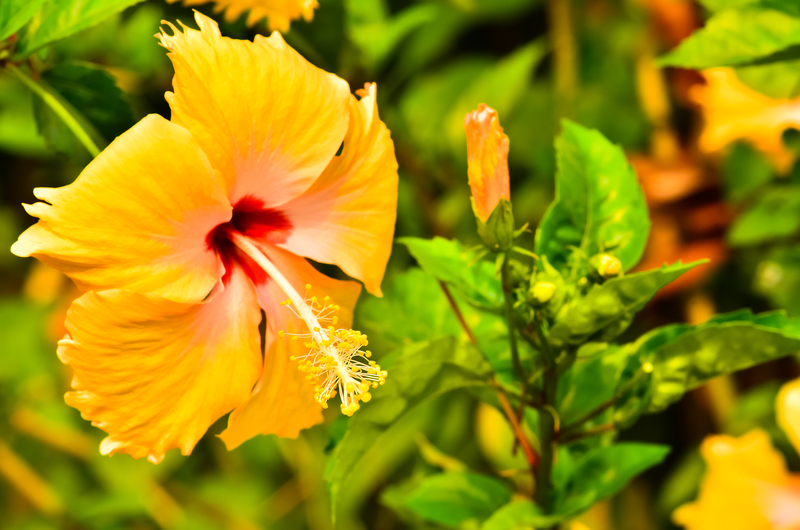How to Successfully Nurture Tropical Plants in the UK
Tropical plants embody a lush, exotic beauty that can transform British homes and gardens into vibrant oases reminiscent of distant rainforests. But the question many plant lovers ask is: how do you nurture tropical plants in the UK's unpredictable climate? This comprehensive guide explores best practices, expert tips, and creative strategies to successfully grow tropical plants in the UK, giving you the knowledge and confidence to bring a touch of the tropics to your own space.

Understanding Tropical Plants and Their Needs
Before diving into specifics, it's crucial to understand the basic requirements of tropical plant care. In their native environments, these plants thrive in humid, warm, and well-lit areas with regular rainfall. The UK's climate, however, is much more variable--cooler winters, lower humidity, and less predictable sunlight can present challenges for tropical species.
- Temperature: Most tropical plants favor temperatures between 18?C and 28?C.
- Humidity: High humidity levels (at least 60%) are essential for optimal growth.
- Light: Bright, indirect sunlight replicates their native understory habitat.
- Water: Steady moisture without waterlogging is key. Tropical roots dislike standing in soggy soil.
- Nutrition: Regular feeding during the growing season (spring and summer) mimics the rich, organic soils of tropical forests.
To nurture exotic and tropical house plants successfully in the UK, you must aim to replicate these natural conditions as closely as possible.
Choosing the Best Tropical Plants for UK Homes and Gardens
Top Indoor Tropical Plants
- Monstera deliciosa (Swiss Cheese Plant)
- Ficus lyrata (Fiddle Leaf Fig)
- Philodendron species
- Alocasia and Colocasia (Elephant Ears)
- Anthurium
- Calathea and Maranta (Prayer Plants)
- Bromeliads
- Banana Plants (Musa spp.)
Tropical Plants for Outdoor UK Gardens
- Canna lilies
- Hedychium (Ginger Lilies)
- Trachycarpus fortunei (Windmill Palm)
- Hardy banana (Musa basjoo)
- Dicksonia antarctica (Tree Fern)
- Tetrapanax papyrifer (Chinese Rice Paper Plant)
- Cordyline australis
Some tropical outdoor species are surprisingly cold-tolerant with the proper care, offering bold foliage and vibrant blooms to UK gardens year after year.
Creating the Right Environment for Tropical Plants in the UK
Temperature Management
Maintaining warmth is pivotal. During winter, ensure indoor tropical plants remain in rooms above 15?C. Avoid placing them in draughty spots or near cold windows.
- Use insulated pots or move plants away from exterior walls during cold snaps.
- For outdoor tropical plants, mulching and fleece coverings can help protect roots and stems through frost.
Enhancing Humidity
The UK's central heating dries the air during winter, so raising ambient humidity is essential to successfully nurture tropical houseplants:
- Mist your plants regularly using a spray bottle.
- Group plants together to create a local humid microclimate.
- Use a pebble tray filled with water beneath plant pots.
- Invest in a room humidifier for larger collections or sensitive species.
Light Optimisation
Tropical plants do best with bright, filtered light. Direct sunlight may scorch leaves, while too little light will cause leggy growth.
- Place plants near east or west-facing windows for gentle, bright light.
- Sheer curtains can diffuse harsh midday sun.
- For darker rooms, consider full-spectrum grow lights to supplement natural daylight.
Soil and Potting Mix
Tropical plants need rich, open, and well-draining soil. Avoid heavy, compacted potting mixes that can suffocate roots.
- Mix in orchid bark, perlite, or coco coir for aeration.
- Use a dedicated aroid or houseplant mix for species like Monstera and Philodendron.
- Repot annually in spring to refresh the soil and encourage healthy root growth.
Watering and Feeding: Vital Aspects of Nurturing Tropical Plants
Watering Techniques for Success
Watering needs will vary based on light, temperature, and plant species. As a general rule:
- Water when the top 2-3cm of soil feels dry to the touch.
- Use tepid, filtered water to avoid shocking roots.
- Ensure pots have drainage holes to prevent root rot.
- Reduce watering frequency in autumn and winter when plant growth slows down.
Fertilising for Lush Growth
Feed tropical plants every 2-4 weeks during their active period (spring and summer) using a balanced, liquid fertiliser:
- Choose higher nitrogen formulas for foliage plants (e.g., Monstera, Philodendron).
- Opt for bloom-boosting fertilisers for flowering varieties (like Anthurium).
- Leach soil once every few months to flush out fertiliser salts.
Overcoming Common Challenges of Tropical Plant Care in the UK
Winter Protection for Outdoor Tropical Plants
Some outdoor exotics, like Musa basjoo and Trachycarpus fortunei, can survive UK winters with proper frost protection:
- Wrap trunks in hessian or fleece, and mulch thickly around the base with straw or bark.
- Shield crowns and growing points from prolonged wet or freezing conditions.
- Pot up and move tender plants (like Cannas and Ensete bananas) indoors or to a greenhouse before first frosts.
Pest and Disease Management
Warm, humid conditions can attract pests and fungal diseases. Look out for:
- Spider mites, mealybugs, and aphids: Control with insecticidal soap, neem oil, or by physically wiping leaves.
- Fungal issues like root rot: Prevent with good drainage, careful watering, and air circulation.
- Yellowing or browning leaves: May signal insufficient light, overwatering, or low humidity. Adjust care routines accordingly.
Dealing with Light Deficiency
Short, overcast winter days limit light--potentially stunting growth or fading variegation. Combat this by:
- Moving plants closer to brighter windows in winter months.
- Rotating pots every couple of weeks to encourage even growth.
- Installing LED grow lights on timers for 10-14 hours of consistent brightness daily.
Adopting Seasonal Care Routines
Spring and Summer Activity
- Increase watering and start fertilising.
- Repot root-bound plants and propagate new ones via cuttings or division.
- Gradually acclimatise indoor plants outdoors to enjoy warm, humid weather (always avoid direct midday sun initially).
Autumn and Winter Adjustments
- Reduce watering and stop fertilising.
- Check for pests that seek shelter indoors as it gets colder.
- Bring sensitive species inside before the first frost.
- Monitor for cold draughts and maintain humidity levels.
Creative Ways to Grow Tropical Plants in the UK
Indoor Jungle Corners
Dedicate sunny spaces to groupings of lush, foliage-heavy tropical houseplants. Mix heights, shapes, and leaf textures for dramatic effect. Use bold planters and statement pots for an urban jungle vibe.
Tropical Greenhouses and Conservatories
A heated greenhouse or conservatory is the ultimate environment to nurture tropical plant species year-round in the UK. Control humidity, temperature, and light for optimal growth and expand your collection to rare or sensitive varieties.
Balcony and Patio Planting
Even without a garden, you can cultivate exotic plants in pots on balconies or patios. Move plants indoors or into sheltered spots when temperatures cool, and enjoy their dramatic effect right outside your living space.
Tropical Borders and Outdoor Beds
For gardens with sheltered microclimates, create bold borders or beds with hardy exotic plants like Tetrapanax, Dicksonia, and Musa basjoo. Layer with both evergreen and summer-flowering varieties for year-round interest.

Frequently Asked Questions About Caring for Tropical Plants in the UK
Can tropical plants survive UK winters outside?
Some tropical species are surprisingly resilient when given protection, but most will need winter shelter or to be grown as houseplants. Hardy bananas and palms can be grown outside with proper care.
Do tropical plants need daily watering?
No. Watering frequency depends on temperature, humidity, and plant needs--overwatering is a common mistake. Instead, check soil moisture regularly and only water when the top few centimetres are dry.
Which tropical plants are easiest for UK beginners?
Monstera deliciosa, Fatsia japonica, and some hardy palms are excellent choices. They are tolerant, forgiving, and thrive with basic care.
Can I grow tropical plants from seed in the UK?
Yes, but germination often requires warmth, humidity, and patience. A heat mat or propagator will aid faster, more reliable results.
Conclusion: Creating Your Own Tropical Paradise in the UK
Bringing the allure of the tropics to your UK home or garden is more than possible--it's deeply rewarding. By understanding the unique needs of tropical plants and tailoring your environment accordingly, you can enjoy magnificent, exotic foliage no matter the British weather.
Whether you focus on dramatic houseplants, lush conservatories, or bold outdoor displays, nurturing tropical plants in the UK is a journey in creativity and care. With attention to warmth, light, humidity, and thoughtful seasonal routines, even novice gardeners can succeed.
So, choose your favorite plants, create the right conditions, and embark on an adventure in successfully growing and nurturing tropical plants in the UK. Your indoor jungle or exotic garden oasis awaits!